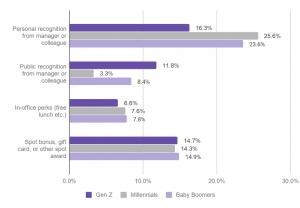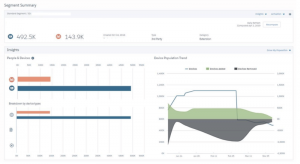Hiring remote employees is catching on among businesses big and small thanks to the numerous benefits it has to offer both employers and employees (or freelancers).
If you’re currently in the process of hiring remote employees or team members to complete your creative team, you might find that the process can get a bit complicated. Everything from recruiting to onboarding can be tricky if you haven’t hired remote workers in the past.
Here are our five tips to help you screen, hire, and onboard remote employees for your creative team.

Reports show that half of the U.S. workforce works from home for at least part of the week. This trend is even more popular for companies that are hiring employees in creative fields (like us!). The flexibility that comes along with working with a creative team lends well to a remote work situation.
Here are five steps to get started …
1) Run a thorough screening process
Many business owners skip standard screening procedures when they hire remote workers. This is usually because the pressure to find a good cultural fit is not quite as intense when the employee won’t be working in the office.
Although it might be tempting to throw caution to the wind when hiring a remote employee, the need for screening becomes even greater when you hire someone you may never actually meet in person.
To combat this try
- Starting with social media to do a quick check to make sure their credentials on their profiles match those they added on their resume.
- Running a background check to make sure they have actually earned the credentials they’ve given you.
Even if you don’t typically run background checks on your onsite employees, running one for offsite employees will be particularly important to confirm their credentials. Experts say background checks can help verify certifications and degrees that were earned and give specific details about employment history.
2) Get as close as possible to a face-to-face interview
Many employers hold a series of interviews when hiring remote employees.
While the traditional process often looks like this
- One or two phone interviews
- One final in-person interview
but if you’re hiring a remote employee, you could simply cut the in-person interview.
Doing this involves a bit more risk, as many employers find out a great deal about a candidate’s creative process and individual work style when they meet with them face-to-face. This is why it will be important for you to get as close to a face-to-face interview as possible with your potential remote employee before you make a decision to hire them.
To get face-to-face time, use programs like
- Skype or the Skype plugin
- Google Hangouts
- Join.me
- GoToMeeting (paid)
However, online interview pros warn that if you use this tactic, “You’ve got to do your homework on your candidate and be incredibly prepared because if colleagues do see this you want to be the best at your game as well.”
3) Address potential security risks
As with most things, the benefits of remote work don’t come without a few downfalls. One of the potential issues you should address as you hire a remote team is cyber security. You’ll be sharing your company’s brand guidelines, marketing strategies, and financial info with your creative team, so it will be important for you to make sure all remote employees who are a part of it are handling this information carefully.
Start by making sure all remote workers’ devices are secure with up-to-date security software and encryption. It will also be important to provide your employees with a secure cloud network where they can share sensitive files safely.
Experts also recommend setting up a secure company network where remote workers can access your corporate network without risk.
4) Assign a test project
The best way to determine a potential employee’s project turnaround time is to assign out a project on a freelance basis during the hiring process.
Once you’ve narrowed your candidates down to the top two or three, you can pay them an hourly rate to complete a project that your team is currently working on to see how quickly and effectively they are able to do it. This will not only show you how quickly they are able to get a project done while they work from home, but it will also show you how creative and self-sufficient they can be while working without a team before you hire them for a remote role.
5) Prepare to launch
One of the most important things you should do before you hire a remote employee is to ensure your management or internal team is ready to onboard remote workers. This means you’ll need to invest in tools and build processes that facilitate the management of offsite employees.
Work with your current team members to identify areas where you will need to adjust your current onboarding process to fit remote workers. You will need to check out new tools for managing remote employees and train your managers to work with offsite employees.
Hiring Remote Employees Isn’t Easier
While hiring a remote team will not only allow you to cut some extra overhead costs, it’s not necessarily easier than traditional hiring. However, it will expand your search for potential talent by eliminating location restrictions.
Hopefully, these tips will help you find, screen, and onboard remote employees who will make valuable contributions to your creative team.
Do you have any tips for hiring remote employees? Let us know in the comments section below!
Business & Finance Articles on Business 2 Community(89)
Report Post









